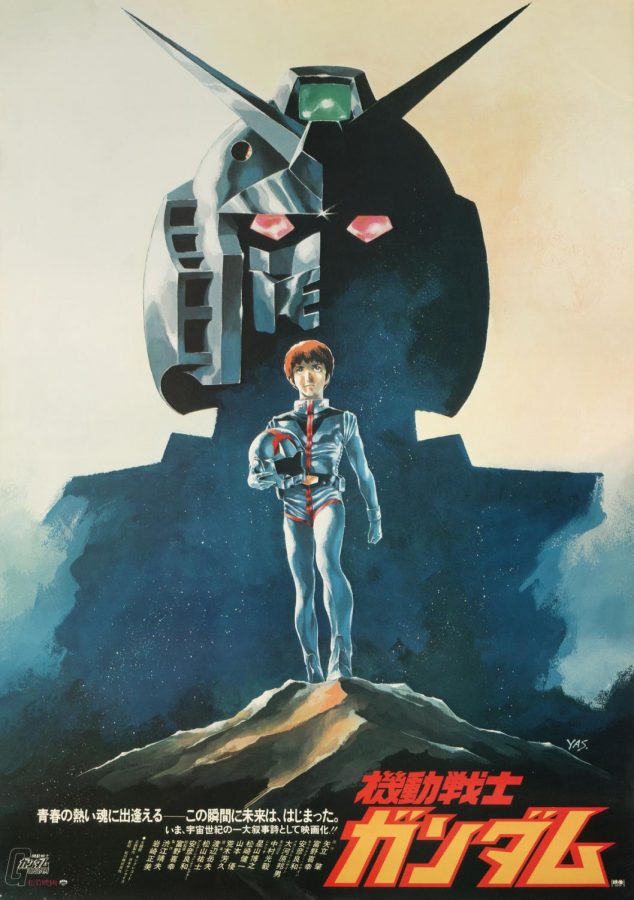“Mobile Suit Gundam Movie Trilogy” Remains the Peak of Animated Sci-fi
Originally airing in Japan from 1979 to 1980, “Mobile Suit Gundam” is an animated TV series that depicts a war between Earth and its interstellar colonies in the year 0079 of the Universal Century. The fascistic Principality of Zeon opposes the corrupt Earth Federation, who forced half their population into space decades ago.
The better-supplied “Earthborn elites” find themselves struggling to match Zeon’s mobile suits, massive human-piloted robots. Now losing the war, the Federation’s own mobile suit prototype, the titular Gundam, falls into the hands of the designer’s teenage son, Amuro Ray (Toru Furuya).
Released between 1981 and 1982, the “Mobile Suit Gundam Movie Trilogy” condenses the original 42-episode run into several two-hour films. This is not a seamless transition, especially when it comes to the pacing. The “Gundam” movies rush in places and certain story elements are changed, glossed over or removed entirely. New animation fills the gaps, and it’s easy to pick out the additions from the original footage. Regardless, the trilogy is still the best way to experience the original “Gundam.”
While some important moments are lost in the transition, the movies are much more watchable than the show. Goofier elements and more blatant animation mistakes are absent. Most importantly, it removes certain absurd, immersion-breaking mobile suits and equipment added for the benefit of merchandising. The agonizing, uneven middle portion of the show is also recut into something far more watchable and poignant.
Similarly, the “Movie Trilogy” brings Gundam’s strong anti-war themes to the forefront. It’s easy to imagine giant robots glamorizing war, and this genre often falls into that trap. “Gundam” instead creates a harsh vision of futuristic warfare that emphasizes the human cost. This emphasis is even more prominent in the movies, where Amuro’s increasing exhaustion feels even more appropriate with how little time there is between each engagement. While the more childish parts of the show are still present, the gap between the most heartbreaking moments is much smaller.
“Mobile Suit Gundam” is a kid’s show, something that is at once easy and difficult to forget. The main cast is mostly made up of teenagers, and visual gags pepper the films. However, the first movie opens with fleeing civilians getting struck by stray munitions, and it only gets worse from there. The movies aren’t totally devoid of levity, but they are more tonally consistent.
As the war-weary characters of “Gundam” lament, some things will never change. Similarly, “Gundam’s” animation is very much a product of the ’70s, even with the updated segments. The human cast members are a little stiff, but they at least show a full range of emotion.
Strong character design is one of the more notable features of “Gundam.” It crafts a future that’s populated by “real” people rather than more idealized figures. The mechanical design for the jets, tanks, spaceships and, of course, mobile suits have also stood the test of time. That being said, the mobile suits do suffer from inconsistent animation to the point where they can look more like people in costumes instead of towering machines.
“Gundam” compensates for that particular issue through strong writing and clever presentation. Sequences like Amuro nearly getting crushed by spent shell casings sells the scale, even when the actual animation doesn’t. Evocative, retro designs and beautifully done backgrounds ensure the visual problems lie with the execution rather than the content, an important distinction.
Even at its worst, there’s a certain charm and dynamism to the animation that’s absent in more polished, modern methods. The third movie’s climax even benefits from it, as the uneven visuals make the final battle feel more visceral. None of this applies to the ’80s additions, which still look gorgeous even by today’s standards. The third film is my favorite of the trilogy, partially because of how much of it was reanimated.
Much like the more visual aspects, the writing of the “Mobile Suit Gundam Movie Trilogy” shows its age, even with its timeless qualities. The soundtrack falls down the middle, as while it’s very much a product of its time, the energetic songs have enough merit to avoid feeling too dated.
That timelessness is also something of a problem. Even after four decades, “Gundam” continues to be incredibly influential, so anime fans might find certain elements tired after consuming decades of offshoots and imitators. However, that’s less of an issue for genre outsiders.
The values can be dated, especially when it comes to the way the female characters are handled. The women of “Gundam” get some level of agency and aren’t confined to the background, even if they could play a bigger role. But that doesn’t offset sexist moments or certain regrettable plotlines. More difficult to place is the casual corporal punishment, which is meant to be uncomfortable on some level, even if it “gets results.
Other than that, the story of “Gundam” holds up. The central conflict is well developed, as is the setting. There are bouts of exposition, but they’re well placed and come after the viewer has a chance to experience things firsthand. The narrative arc is just as well done. “Gundam” starts loud and raw, maintaining that energy until reaching a cataclysmic end. Even then, the more relatable, personal struggles find their place in the story and overshadow the flashier, robot-centric aspects.
The characters are engaging and change over the course of the trilogy. Amuro’s constant struggle for survival forces him to confront that he’s not fighting for anyone or anything. Meanwhile, his rival, Zeon ace Char Aznable (Shuichi Ikeda), sports a charismatic exterior but literally masks his conflicting motivations.
The supporting cast goes through similar struggles, though none are as compelling or well developed as Char’s or Amuro’s. A major message of “Gundam” is that war is fought by human beings. No matter how justified a character might be, “real” people are dying as a result of their actions. Similarly, the ethics of individual soldiers does little to offset how morally bankrupt both factions are. The corrupt Federation is only the “good guy” in the sense that it opposes the genocidal Zeon.
While an English dub exists for the “Mobile Suit Gundam Movie Trilogy,” it’s so low quality that it’s not worth the absurd effort of finding. However, the original Japanese dub is strong enough that even the language barrier can’t take away from the passion in the voice actor’s performances.
Unfortunately, the only way to legally watch the trilogy in the U.S. is by purchasing the admittedly pricey DVD or Blu Ray versions. Even then, I’d say it’s worth the investment to watch one of the most influential and harrowing pieces of science fiction ever made.













































































































































































































